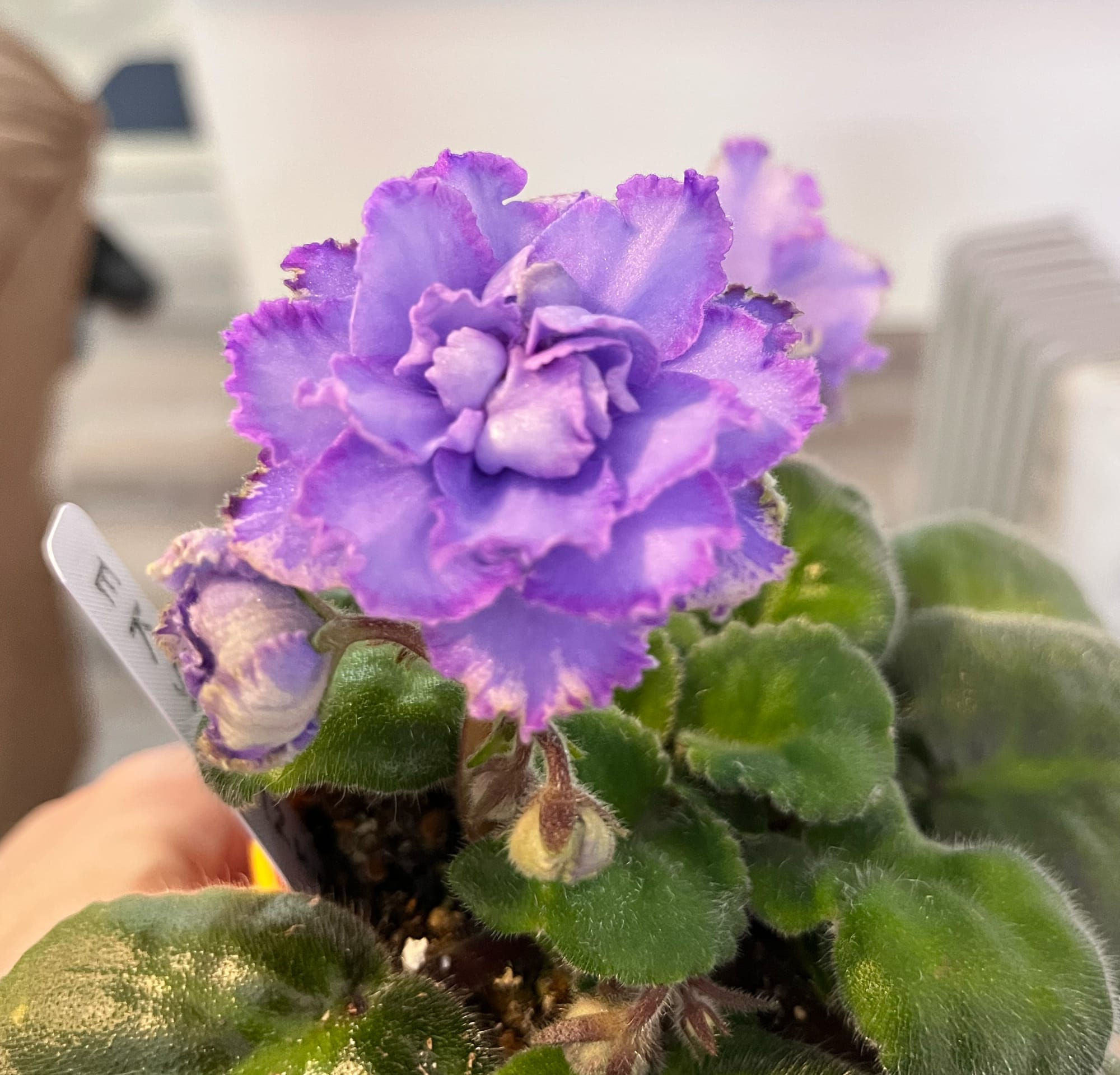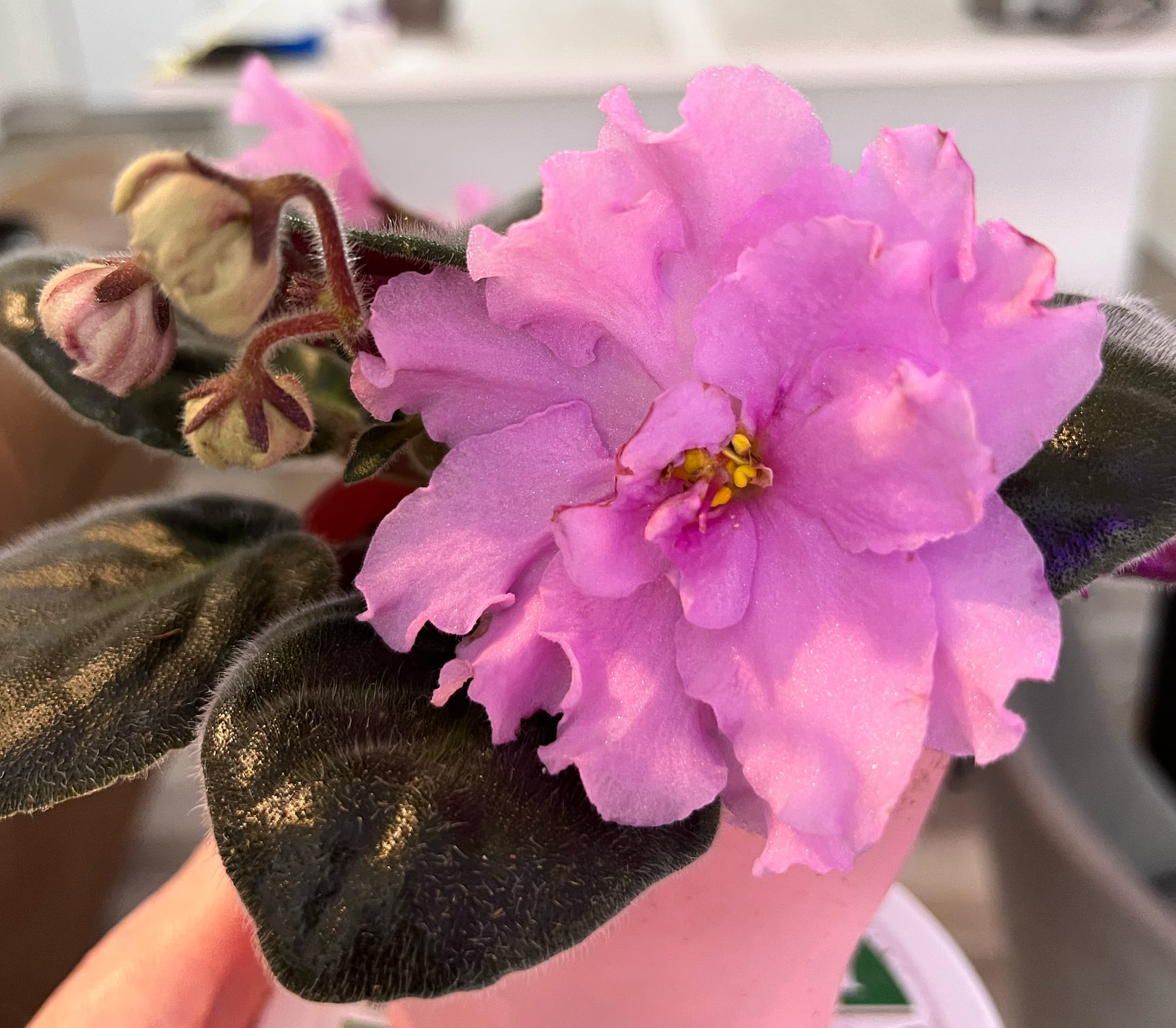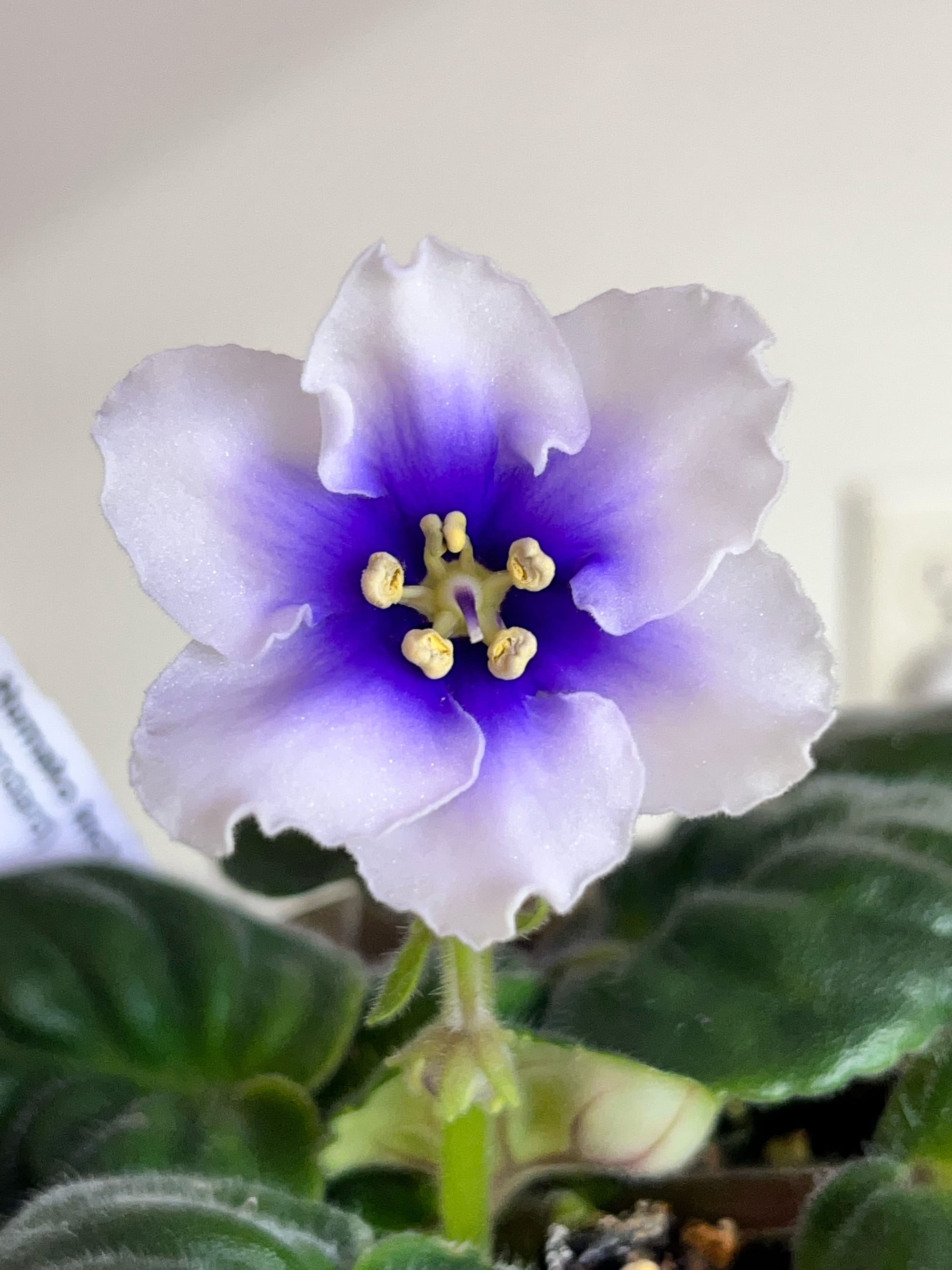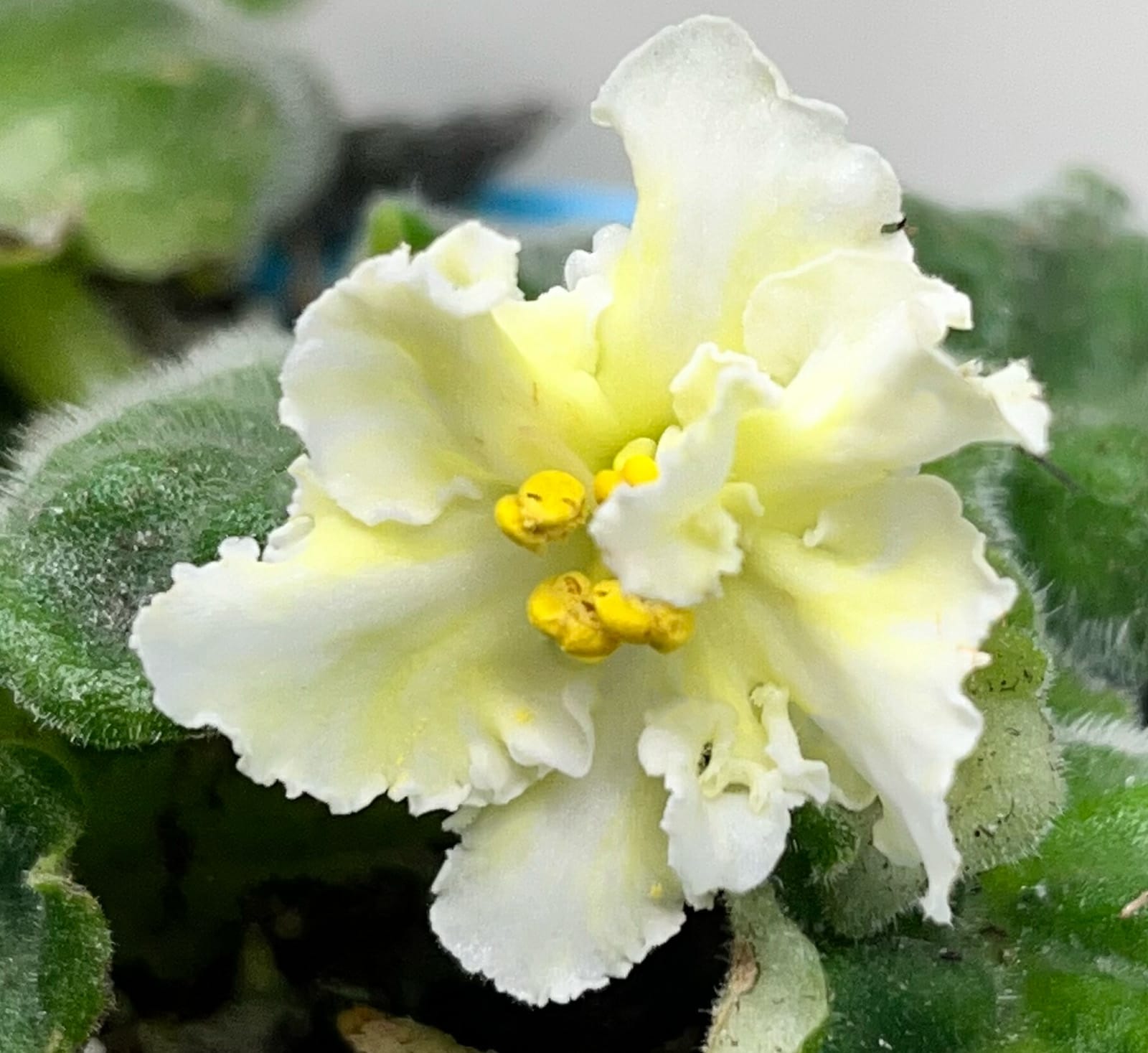The Sometimes Complex Allure of Hybridizing African Violets
Finding unique varieties to fit the taste of almost any plant lover

I wasn’t really into African violets at first, but I got hooked after I noticed how a couple of them survived despite my complete lack of care. They barely got any attention from me, and they just kept going. That got me thinking—if these are so easy to take care of, maybe there are some varieties out there that are more interesting than the usual ones you see in garden centers or at your aunt’s house. And of course, there are. Just look at Etsy, eBay, the Violet Barn and Lyndon Lyon. So, I decided to order a bunch from different places. I was mainly looking for African violets with super large blooms, or ones with unique petal shapes and colors—or color combos. And some traits like green colored petals or frilly edges.
It’s tough to really judge an African violet's flowers based on online photos. You have to see them in person to fully understand what you're dealing with, especially if you’re thinking about hybridizing. About half the plants I ordered turned out to be a letdown for what I was trying to do, but I didn’t realize that until they bloomed. Ultimately, I found maybe two plants I really liked, a few others that were ‘okay’—nothing special, but I could work with them—and a bunch of flowers that only looked impressive up close in a photo blown up to full screen size. Strangely, I didn’t run into this issue with other flowers I’ve hybridized. Those other flowers seemed to match up much better in person compared to what you see online.
If you're trying to hybridize these plants to create new varieties like me, you always have an idea in mind for possible outcomes when you plant and grow out these crosses. A lot of times, it seemed like the main goals people had in mind when creating new varieties was hardy grower with "a lot of flowers" and "bright colors." But if you start looking around, you can find unique varieties. The problem with going larger with flowers is that you then can end up with fewer, but bigger flowers. I personally don't mind. You can also have flowers flop over from their own weight if they get too large. That's another problem because you don't want downward facing flowers. So in my mind, if you're going bigger with flowers, you have to have lower petal counts and stronger stems. I personally really like the simple single, large African violets because you get the impact of the larger flower and the color in one bloom. But within the "single" bloom, you can have an assortment of petal shapes and edges, like ruffling. And a wide range of color patterns, including fantasy and colored edges that are also ruffles. There is a lot to work with in here.

Hybridizing flowers is pretty unnatural compared to what happens in the wild, and that can lead to some unique challenges. Sometimes your flowers might end up infertile or only partially fertile. For example, a flower might have a stigma but no pollen, or it might produce tons of pollen, but the stigmas turn into a mix of leaves and petals (see the photo at the top). On the other hand, you could get a fully functional flower with both stigma and pollen, but if the bloom has lots of petals, those parts can get buried and make pollination tricky. This is one reason to appreciate single blooms! Interestingly, you can often create double blooms by crossing semi-doubles or even singles with semi-doubles. This approach can actually be easier than crossing two doubles, which sometimes struggle with infertility and have everything hidden or buried under layers of petals.
These challenges come up with lots of different flower species. I see the same things when people talk about crossing dahlias, pelargoniums (geraniums), roses, streptocarpus, or African violets. Once you get the hang of these quirks, you can usually apply that knowledge to other plants when making crosses.

In the semi-double African violet above, you can see how the petals crowd into the center where the pollen and stigma are. If that’s happening with a semi-double, you can imagine how tricky it gets with a fully double bloom. For reference, this is a 3-inch-wide pink variety called 'Super Duper.' That's a gigantic bloom for an African violet.
When hybridizing frilly-edged African violets, you may encounter an entirely new set of challenges. While frilly edges can add an elegant, whimsical touch to the blooms, excessive frills can lead to unexpected and sometimes undesirable results. For instance, the flowers may become so overly ruffled that they resemble tiny cabbages rather than traditional blooms, or the frills may distort the shape of the petals, giving them a deformed appearance. In extreme cases, the frills can even prevent the petals from fully opening. Which may not look so great. While a touch of frill can enhance the charm of a bloom, some hybridizers might become overly fixated on achieving dramatic visual effects. Focusing too much on unnatural bloom shapes can throw off the plant’s balance and make it harder for the flowers to open fully or grow evenly.
Of course, I’m no stranger to pushing boundaries myself. It's a delicate balance between creativity, innovation and maintaining the beauty and functionality of the flower and even the plant.

If you ever try hybridizing African violets, you might realize there’s no true yellow flower. What’s actually happening is that yellow pollen mixes with the petals, creating the illusion of yellow petals. It’s essentially just pollen that’s gotten absorbed into the petals. I’m not sure ‘ingested’ is the right word, but you can see what I mean in the photo below. From my experience, yellow flowers tend to produce a lot of pollen, and apparently, that excess pollen makes it more likely to get those yellow pollen-stained petals. But the pollen is inside the petals, not on top of the petals, giving it the yellow look. That turned out to be one good reason to keep this flower around, it produces a lot of pollen.

© Copyright Terry Aley
The Aley Acres seed shop on Etsy.
Dahlias, Notes from a Gardener book on Amazon.
Floral Art and Landscape Painting Etsy shop.
TikTok, some gardening posts.